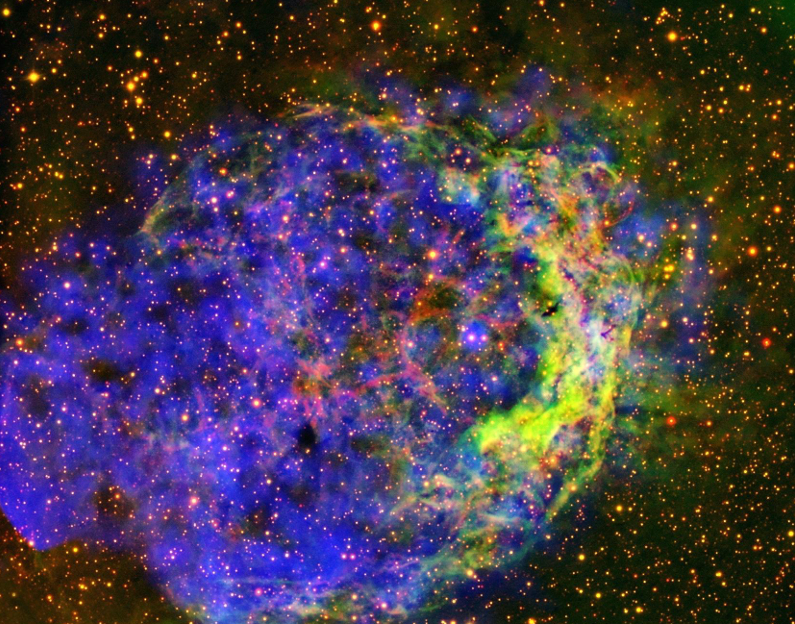
 Credit: X-ray: J. Toalá & ESA; Optical: Don Goldman
Credit: X-ray: J. Toalá & ESA; Optical: Don Goldman
Blowing a Hot Bubble
Very massive stars play an important role in shaping the galaxies in which they reside. Their powerful radiation (millions of times more luminous than the Sun) lights up and ionizes large volumes of surrounding gas and dust. This radiation also drives powerful winds at velocities of millions of miles per hour. These winds are galactic bulldozers, creating huge bubbles many light-years in extent around the star. Finally, the stars explode as supernovae, creating vast glowing supernova remnants. As the star ages, the wind becomes enriched with chemicals cooked up in the star's core nuclear furnace, and these elements get distributed into interstellar space through the wind and, eventually, through the supernova explosion. The collision of the stellar wind with the surrounding galactic material, or the collision of the wind with slower wind wind material ejected in some earlier stage of a star's life, is a very violent process. The energy of this collision can be converted to extreme heat, producing temperatures of millions of degrees near the edge of the bubble. The image above shows one such hot, wind-blown bubble. This image was obtained by the XMM-Newton X-ray observatory. It shows the hot edge of the bubble produced by the winds from a star called WR 18, an evolved massive star. WR 18 is a source of X-rays and can be seen towards the upper right-hand edge of the bubble, just inside the bright rim of X-ray emitting material. The colors in the image represent X-ray energy, blue for high-energy X-rays, and red for lower-energy X-rays. Studies have shown that the pre-existing material gets efficiently mixed with the enriched stellar wind, providing the raw material to form new, more chemically-evolved, stars and planets.
Published: April 23, 2018
<
HEA Dictionary ● Archive
● Search HEAPOW
● Other Languages
● HEAPOW on Facebook
● Download all Images
● Education ● HEAD
>

Each week the HEASARC
brings you new, exciting and beautiful images from X-ray and Gamma ray
astronomy. Check back each week and be sure to check out the HEAPOW archive!
Page Author: Dr. Michael F. Corcoran
Last modified Monday, 26-Feb-2024 17:46:19 EST


